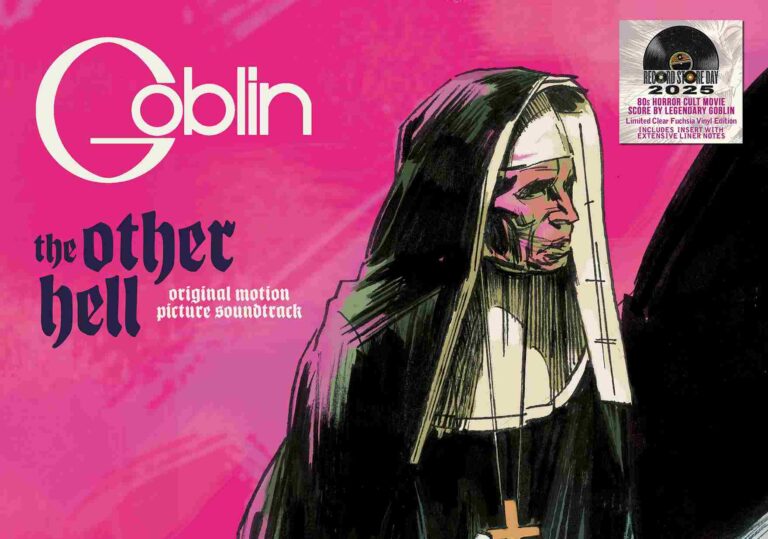Pink Floyd: come nacque il capolavoro psichedelico “The Piper at the Gates of Dawn”
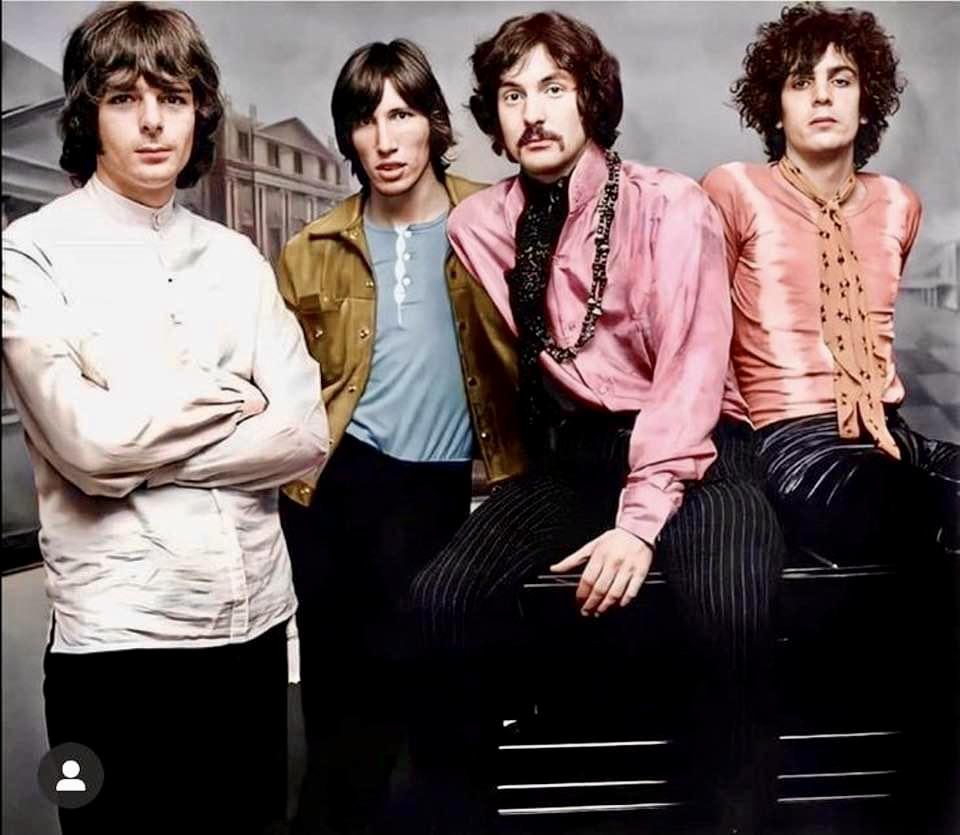
I Pink Floyd avrebbero creato il loro capolavoro di psichedelia tra l’inverno e la primavera del 1967. Quello sarebbe stato considerato uno dei migliori album degli Anni Sessanta.
Nessuno a quei tempi, a parte i Pink Floyd, avrebbe potuto pubblicare un lavoro più innovativo di “The Piper at The Gates of Dawn”. Tra i grooves del disco ci sono incredibili improvvisazioni strumentali e fantasiosi racconti di favole con personaggi ed immagini che avrebbero reso il disco un capolavoro di fantasia ed innovazione.
I Pink Floyd registrarono il loro album di debutto agli Abbey Road Studios nello Studio 3. Guarda caso quello era lo studio dove i Beatles avevano inciso “Revolver” ed un certo numero delle loro hits degli esordi.
I Pink Floyd e il noto produttore Norman Smith
L’album venne prodotto da Norman Smith. Norman era stato il principale ingegnere del suono dei Beatles durante il loro periodo più prolifico dal 1962 al 1965.
Come risultato della sua esperienza nel registrare con i Beatles, Norman aveva imparato una serie di “trucchetti” per creare magie in studio e che avrebbe usato anche per le sessions di registrazione dei Pink Floyd.
Il rapporto professionale tra Syd Barrett e Normal Bates
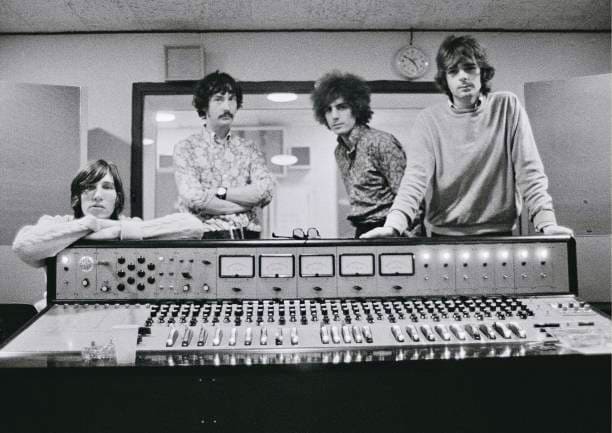
Ma durante il processo di registrazione le cose non sarebbero filate sempre lisce. Ci furono, infatti, dei conflitti tra Smith e Syd, che avevano opinioni differenti su come l’album avrebbe dovuto essere registrato. Syd era un fermo sostenitore del concetto che la prima “take”, il primo tentativo, fosse sempre il migliore. Norman, invece, aveva sviluppato il suo talento imparando da George Martin. Martin aveva le sue personali idee su come un album andasse realizzato. Alla fine Syd e Norman trovarono un terreno comune su cui lavorare. Questo permise di plasmare il sound unico di “The Piper at the Gates of Dawn”.
La comparsa a sorpresa di Paul McCartney
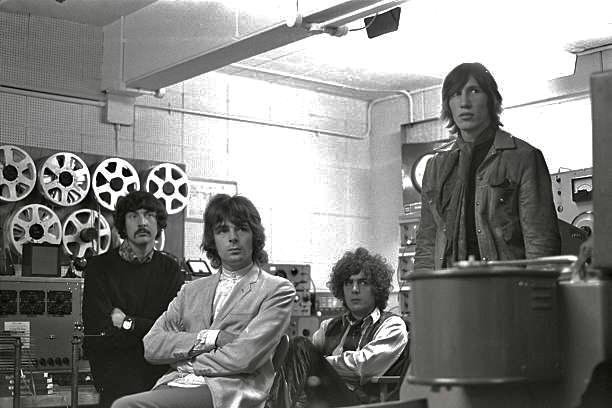
Prima che le registrazioni iniziassero, ci furono delle pre-session per far incontrare e conoscere Norman e i quattro membri dei Pink Floyd. Ad un certo momento del meeting, nello studio entrò nientedimeno che Paul McCartney che si era incuriosito. Nello stesso tempo Paul fornì parole di incoraggiamento e raccomandò alla band Norman lodandolo per il suo lavoro. Tutto prima di rientrare nello studio accanto, lo Studio 2. Lì The Beatles stavano registrando il loro epico album “Sergeant Pepper’s Lonely Hearts Club Band”.
I ricordi di Nick Mason
Non molto tempo dopo la visita di Paul, i membri dei Pink Floyd furono invitato allo Studio 2 durante le session di registrazione di “Lovely Rita”. Quella occasione è stata ricordata dal batterista dei Pink Floyd Nick Mason. “Venimmo fatti entrare frettolosamente nello Studio 2 dove i Fab Four erano impegnati a registrare Lovely Rita. La musica aveva un sound bellissimo ed incredibilmente professionale. Noi ci sedemmo modestamente dietro la control room, mentre loro lavoravano al mix. Dopo un po’ di tempo ci fecero uscire”. Nick ha commentato anche il suo ricordo dei membri dei Beatles. “Per noi erano dei semidei. Sembravano tutti estremamente simpatici, ma erano talmente in alto rispetto a noi che erano fuori dalla nostra portata”.
Le influenze dei Pink Floyd e dei The Beatles

Ci sono tanti pettegolezzi sul fatto che, in finale, una band ispirò l’altra e viceversa e su quanto i Pink Floyd abbiano ripreso dai Beatles. Ma lasciamo che queste rimangano soltanto delle voci di corridoio. Di sicuro i Beatles rafforzarono i Pink Floyd, in modo particolare Syd. Quello che lui aveva velocemente imparato è che puoi scrivere una canzone riguardo qualsiasi argomento e non devi per forza farlo nell’attuale e formale stile pop. I Pink Floyd avevano anche realizzato di essere passati ad un livello di professionalità abbastanza alto da poter registrare un album. Ma non basta. Erano privilegiati abbastanza da averlo registrato negli stessi studi dei The Beatles.
Il titolo del primo album dei Pink Floyd
Il surreale titolo dell’album, “The Piper at the Gates of Dawn” venne preso in prestito da Syd da uno dei suoi libri favoriti, “The Wind in the Willow”. Il riferimento al dio greco Pan, in The Piper at the Gates of Dawn, viene dal capitolo 7 della novella per bambini del 1908.
I brani di “The Piper at the Gates of Dawn”
Il brano di apertura dell’album, “Astronomy Domina”, comincia con l’effetto del suono di un telegrafo e dalla voce del manager Peter Jennings. Al megaphone Jennings recita parlando di oroscopi, stelle e galassie. “Astronomy Domina” è una sorprendente opener dell’album, con accenni al prototipo del prog rock che sarebbe presto nato. Questo si evince nella eco, nei delays e nei reverb del sound. E’ in questo pezzo che il genio musicale di Syd è contenuto in tutta la sua grandezza affinché tutti possano ascoltarlo.
“Lucifer Sam” ispirata ad un gattino e il contributo di Richard Wright
La seconda track dell’album, “Lucifer Sam”, è stata ispirata dal dispettoso gattino di Syd, Sam. Il pezzo è dominato dalla chitarra di Syd, puntualizzata attraverso una echo machine che produce un puro sound Psych Pop. Contiene anche un effetto stile metà anni ’60 che fa molto pensare a James Bond. Un genere azzeccato per quei giorni e comunque molto attuale.
Il contributo di Richard Wright
“Matilda Mother” è stata scritta da Syd, come tutte le canzoni di questo album, eccetto una.
Per l’occasione Richard Wright, il tastierista, ha assunto il ruolo di lead vocals mentre Syd si è unito ai cori e canta l’ultimo versetto della canzone. “Matilda Mother” è un brano complesso, con multipli cambi e vocals elaborate che ricorda alcuni del momenti più stravaganti di Sergeant Pepper’s. Pow R Toc H contiene una serie di suoni e mima un “viaggio” fatto con l’LSD. Il piano di Richard Wright riporta il tutto su questa terra, con del bellissimi arrangiamenti alle tastiere.
L’unico pezzo dell’album scritto da Roger Waters
Take Thy Stethoscope and Walk è probabilmente una delle peggiori canzoni del disco ed è l’unica che non è stata composta da Syd Barrett. E’ stata scritta, invece, da Roger Waters e mostra la mancanza di immaginazione e di coerenza del musicista, nuovo nelle vesti di songwriter.
Interstellar Overdrive, è un’introduzione dei Pink Floyd al genere che sarebbe stato denominato Space Rock. E’ un brano improvvisato, composto e suonato molto di frequente all’UFO Club. E’ stato originariamente sviluppato durante un’estesa jam.
La creatività di Syd Barrett
The Gnome è un gioioso riferimento a The Surreal Scarecrow di JRR Tolkien. Entrambi infatti sono naive e spassosi, con delle rime da bambini. Ognuna di esse è una stravagante avventura in se per se.
Chapter 24 è un tentativo di Syd di interpretare il significato dell’antico libro cinese I Ching (The Book of Changes). Questo libro dal sapore mistico era molto popolare nel magico anno 1967.
L’ultimo pezzo dell’album contiene una forte dose di psichedelica e si intitola Bike. Una specie di preludio a quello che sarebbe stato il materiale solista di Syd. Bike è un brano arioso dal sound psichedelico che rappresenta bene il finale del viaggio di questo album nel pianeta delle meraviglie musicali.
La front cover di “The Piper at the Gates of Dawn”
L’accattivante front cover di The Piper at the Gates of Dawn è stata realizzata da uno scatto di Vic Singh. L’ispirazione della copertina proviene dalla musica relativa alla band. Altro non è che un’immagine surreale e psichedelica.
La lente prismatica usata per la front cover era stata data a Vic da George Harrison. Era usata quando le lenti venivano girate dentro la macchina fotografica. La multi-immagine del prisma sarebbe andata direttamente ad interessare la pellicola.
Filmare con le lenti prismatiche era complicato, ma dava molta ispirazione. Così parecchi rulli di pellicola vennero girati. Mostravano la band vestita in abiti psichedelici con un background bianco. Quando le foto vennero mostrate alla band, tutti ne furono entusiasti. Piacquero talmente tanto che Syd, anche lui artista, fu ispirato da quelle immagini per la creazione della back cover dell’album.
Il grande successo in UK
La reazione del pubblico all’album fu piuttosto eterogenea. L’album fu un successo di critica e commerciale in UK, dove raggiunse la posizione numero 6 delle classifiche di vendita. Ma sfortunatamente la stessa cosa non accadde negli Stati Uniti. Li l’album avrebbe raggiunto soltanto la deludente posizione numero 131 nella classifica del U.S. Billboard Music Charts.
Un viaggio nello spazio e nel tempo
“The Piper at the Gates of Dawn” è un disco dal sound molto fresco che esplora il mondo imbevuto di acidi della Londra del 1967. Si comporta in pratica come una capsula del tempo nel mondo dal quale è stato scaturito. E’ un viaggio attraverso lo spazio e il tempo, diverso da tutti i successivi lavori dei Pink Floyd. Con il passare degli anni il disco ha fatto scaturire una lunga serie di sub-generi ed ha influenzato numerose band e musicisti del genere rock sperimentale.
L’album che ha lanciato la carriera dei Pink Floyd
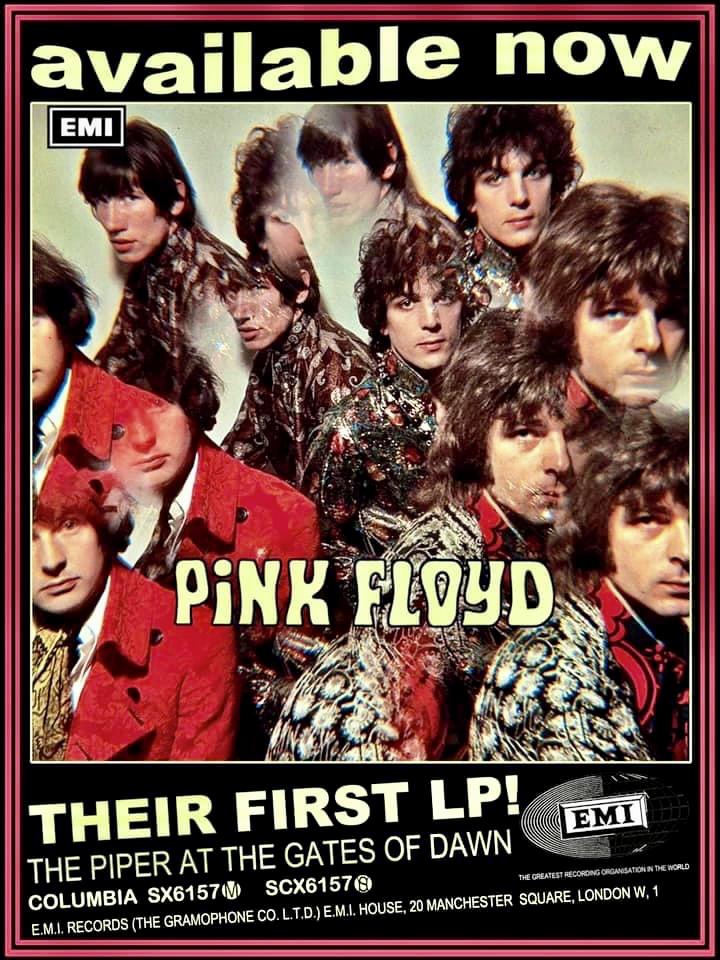
E’ l’album che ha fatto partire tutta la carriera dei Pink Floyd e senza non ci sarebbe mai stato nessun Dark Side of the Moon, Animals e The Wall.
“The Piper at the Gates of Dawn” ha steso le basi per quello che i Pink Floyd sarebbero diventati. Ed è geniale dall’inizio alla fine. E’ davvero sorprendente come una band come i Pink Floyd esistesse nel 1967. C’erano parecchie band simili a loro ma nessuna che si approcciasse alla musica guardandola da quell’angolatura. Così unica, come hanno fatto i Pink Floyd con quell’album. Se non lo avete ancora ascoltato, vi raccomando fortemente di farlo.
I Pink Floyd e “The Piper at the Gates of Dawn”
Pink Floyd would create a masterpiece of Psychedelia during the winter and spring of 1967, that would come to be considered to be one of the best albums of the 1960’s.
Nobody at that time other then Pink Floyd could of made a trippier album then the ‘Pipers at the Gates of Dawn’. Within the records grooves are mind bending instrumental improvisations and fanciful fairytales with characters and images that help make the album into a quirky and quite trippy masterpiece. Pink Floyd recorded their debut album, ‘The Piper at the Gates of Dawn’ at Abby Road Studios in studio 3.. Which happened to be the studio where the Beatles had recorded their album Revolver and a number of their earlier hits.
The producer of the album Norman Smith
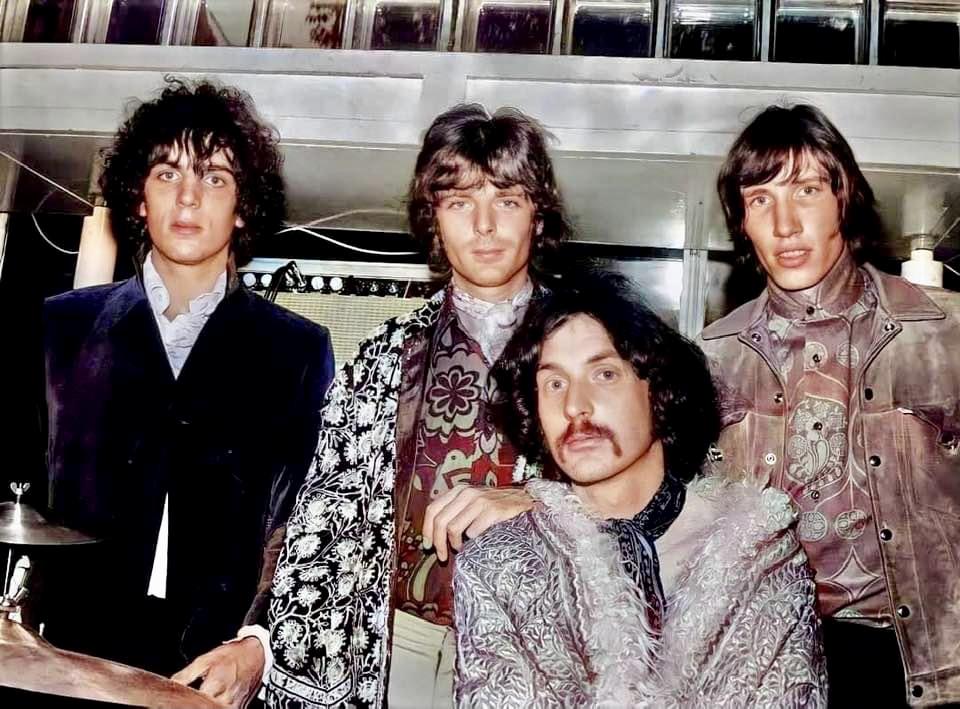
The album was produced by Norman Smith. Who had been the Beatles principle engineer during their most prolific period, from 1962 until 1965. As a result of his recording experience with the Beatles, Norman had learned a trick or two of studio magic and those tricks would be well used during the recording sessions ahead.
The relationship between Syd Barrett and Norman Smith
Things would not always run smoothly during the recording process. There would be conflict between Smith and Syd, who both had different opinions on how the album should be recorded. While Syd was a firm believer in the concept that, the first take was the best take. Norman who had learned his craft under George Martin had his own ideas on how the album should be made. Eventually Syd and Norman would find common ground between them, which would allow them to shape the unique sound of, “The Piper at the Gates of Dawn”.
Paul McCartney’s surprise to Pink Floyd
Before recording began, there was a pre-session get to know each other meeting, between Norman and the four members of Pink Floyd. At one point in the meeting, who should walk into the studio but Paul McCartney, who dropped by out of curiosity, as well as to offer a few words of encouragement and also give the band a glowing recommendation of Norman’s studio acumen. Before returning next door to studio 2. Where the Beatles were in the process of recording the Beatles epic album, ‘Seargent Peppers Lonely Hearts Club Band’.
Nick Mason’s memories
Not long after Paul’s visit, the members of Pink Floyd were invited into Studio 2 during the recording session for , ‘Lovely Rita’. The occasion was recollected by Pink Floyd’s drummer Nick Mason. “We were ushered into Studio 2 where the Fab Four were busy recording, ‘Lovely Rita’. The music sounded wonderful, and incredibly professional. We sat humbly and humble, at the back of the control room, while they worked on the mix, and after a suitable period of time had elapsed, we were ushered out again. Of the Beatles themselves, Nick elaborated , “They were godlike figures to us.”, “They all seemed extremely nice, but they were in a strata so far beyond us that they were out of our league.”
The influences of Pink Floyd and The Beatles
As far as speculation weather either band inspired the other, and if the Beatles passed on anything to Pink Floyd. That’s left to speculation. But if anything the Beatles reinforced to Pink Floyd, and particularly to Syd. What he had known all along, which was that you can write songs about anything, and they don’t have to be written in the then current formalistic pop style. It also let Pink Floyd realize that they had made it to a level where they were professional enough to record as contemporaries to the Beatles and be privileged to record in the same place as the Beatles.
The title and the tracklist of the album
The surreal title of the album, ‘The Piper at the Gates of Dawn’ was borrowed by Syd from a favorite book of his, ‘The Wind in the Willow. Which references the Greek god Pan as,The Piper at the Gates of Dawn in chapter 7, of the 1908 children’s novel.
The opening track of the album ‘Astronomy Domine’ begins with a telegraph like sound effect, accompanied by the bands manager Peter Jennings, giving an out of this world recitation, of the names of horoscopes, stars and galaxies on a megaphone. Astronomy Domine a stunning opener for the album, is a prototypical echoing of the coming of Progrock. Thats awash in echos, delays and reverb. It is on this song, that Syd’s musical genius is laid out for all to hear.
“Lucifer Sam” inspired by a little cat
Lucifer Sam, the album’s second track was inspired by Syd’s mischievous cat, Sam. That’s dominated by Syd’s guitar, fed through an echo machine, which produces a sound thats pure Psych Pop. With a stylishly mid – 1960’s James Bond feel to it. That was just right for 1967 and still is to this day.
Matilda Mother, written by Syd, as all but one song on the album are. Has Richard Wright, the bands keyboardist assuming lead vocals, while Syd joins in on the choruses and sings the song’s last verse. Matilda Mother is a complex track, with multiple changes and elaborated vocals, which reminds one of Sargent Peppers more whimsical moments. Pow R Toc H* , featuring a series of sounds and shouts mimics a spaced out trip on LSD, while Richard Wrights piano brings things back down to Earth with some beautiful keyboard arrangements.
The only song of the album written by Roger Waters
Take Thy Stethoscope and Walk*, is most likely the worst song on the album, and the only song not written on the album by Syd Barrett. Was written by Roger Waters, and shows the novice song writer’s lack of imagination and coherence.
The creativity of Syd Barrett
Interstellar Overdrive* an introduction by Pink Floyd to the genre which would be called ‘Space-Rock’, is an improvisational song which was composed and frequently played at the UFO Club. Was originally developed during as an extended jam that sometimes stretched out to the 30 minute mark or more. The Gnome*, is a playful nod to JRR Tolkien and *The surreal Scarecrow, are both naive and playfully eerie nursery rhymes . Each a whimsical adventure in itself. Chapter 24, is Syd’s attempt to interpret the meaning of the ancient Chinese book, the ‘I Ching’ (The Book of Changes). Which was a very popular mystical book during that magical year of 1967. **The last song on the album is a heavy dose of psychedelia provided by the song Bike. An eerie prelude to some of Syd’s later solo material. Bike is an lighthearted psychedelic curiosity that provides a fitting ending to the albums journey through a musical wonderland.
The front cover of the album
The eye catching front cover for ‘The Piper at the Gates of Dawn’ was shot by Vic Singh. Who’s inspiration for the cover would come from the bands music and image, which was if anything was surreal and psychedelic. The prism lens used for the front cover had been given to Vic by George Harrison. When the lens was screwed onto the camera. The prisms multi-image affect would go straight to the film.
Filming with the prism lens was tricky, but inspirational and quite a few rolls of film were shot, of the band dressed in psychedelic clothes and filmed against a white background. When the photos were submitted to the band. They loved them. So much so that, Syd an artist himself, was inspired to create the back cover for the album.
A big success in UK
The reception for the album was a mixed bag for, ‘The Piper at the Gates of Dawn’. The album was a critical and commercial success in England, reaching number six on the U.K. music charts. But unfortunately the same was not to be in the United States. Where the album would only reached a disappointing number 131 on the U.S. Billboard Music Charts.
A journey through space and time
’The Piper at the Gates of Dawn’ is an eerily refreshing album that explores the acid drenched world of 1967 London, that acts as a time capsule from the world from which it sprang. It’s a journey through space and time, dissimilar to any later Pink Floyd album, which over time has spawned a number of sub-genres that has deeply influenced numerous bands/ musicians and experimental rock in general .
The album that launched Pink Floyd’s career
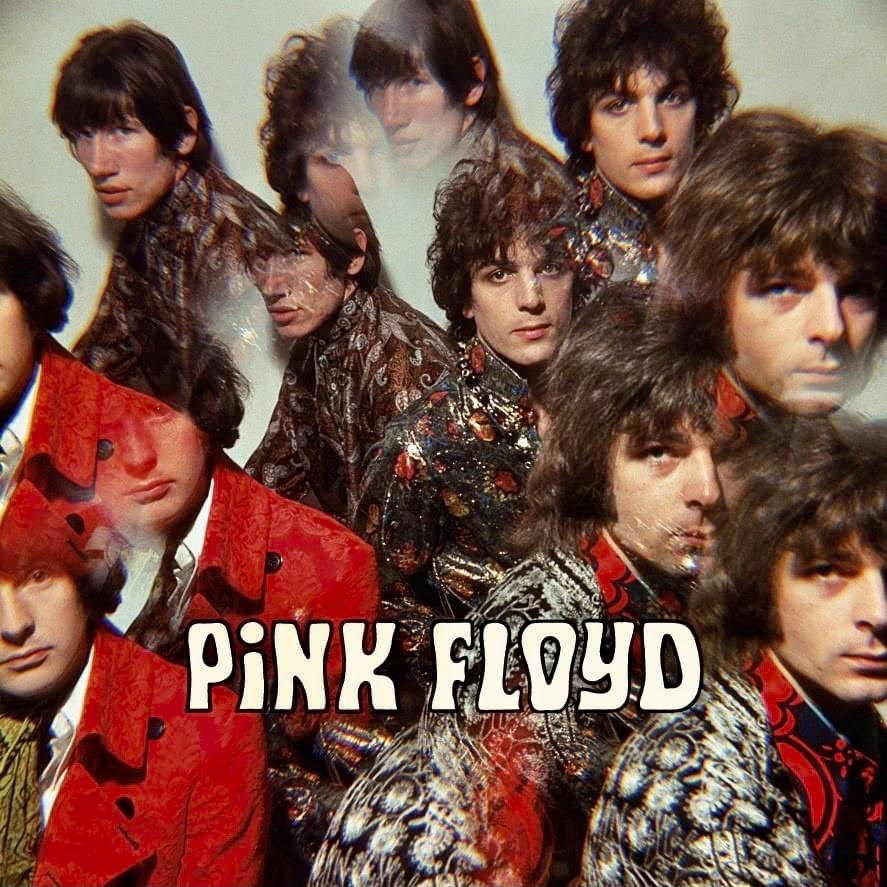
It’s the album that started it all for Pink Floyd and without it there would of been no ‘Dark Side of the Moon’, ‘Animals’ and ‘The Wall’. ‘The Piper at the Gates of Dawn’ laid the groundwork for what Pink Floyd was to become. And is genius from start to finish. It really is quite amazing that a band like Pink Floyd existed in 1967. There were a lot of bands that were similar to them but none who approached music from such a unique angle as Pink Floyd did on this album. If you haven’t heard it yet, I highly recommend it.






